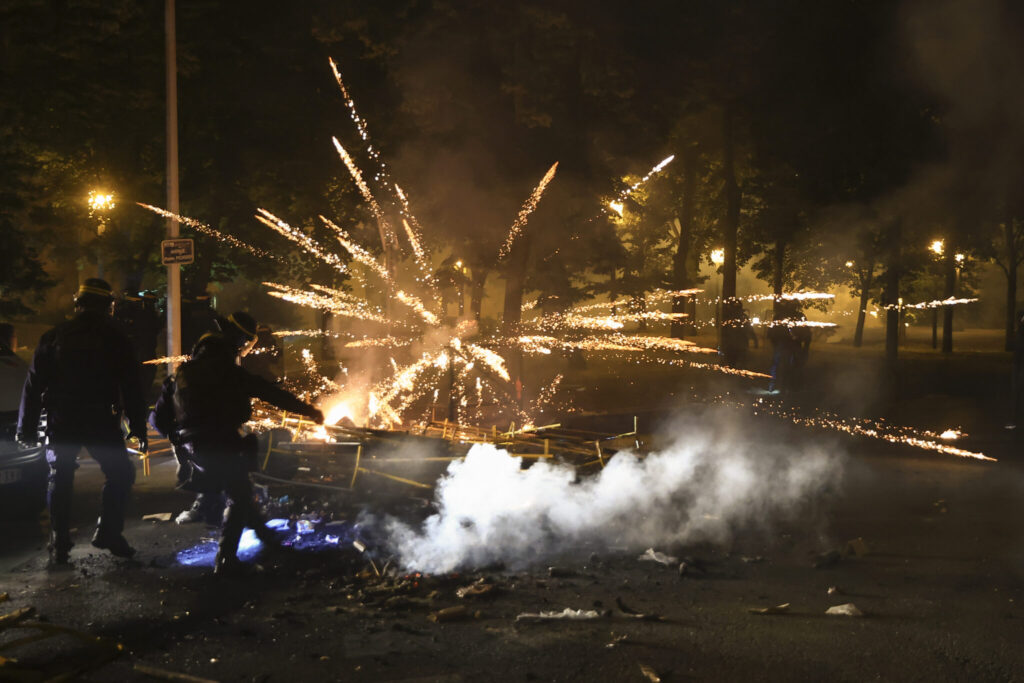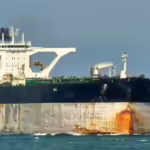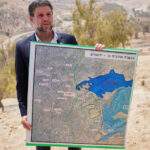Major French cities saw a third night of riots on Thursday as President Emmanuel Macron fought to contain a mounting unrest triggered by the deadly police shooting of a teenager of Moroccan and Algerian descent during a traffic stop. Forty thousand police officers were to deploy across France, nearly four times the numbers mobilized on Wednesday, but there were few signs that government appeals to a de-escalation in the violence would quell the widespread anger. The Associated Press has the story:
France mobilizes tens of thousands of police
Newslooks- NANTERRE, France (AP)
France mobilized tens of thousands of police officers on Thursday in an effort to head off widespread urban rioting following the deadly police shooting of a 17-year-old that shocked the nation, with commuters rushing home before transport services closed early to avoid being targeted by rioters.
The police officer accused of pulling the trigger on Tuesday was handed a preliminary charge of voluntary homicide after prosecutor Pascal Prache said his initial investigation led him to conclude “the conditions for the legal use of the weapon were not met.”
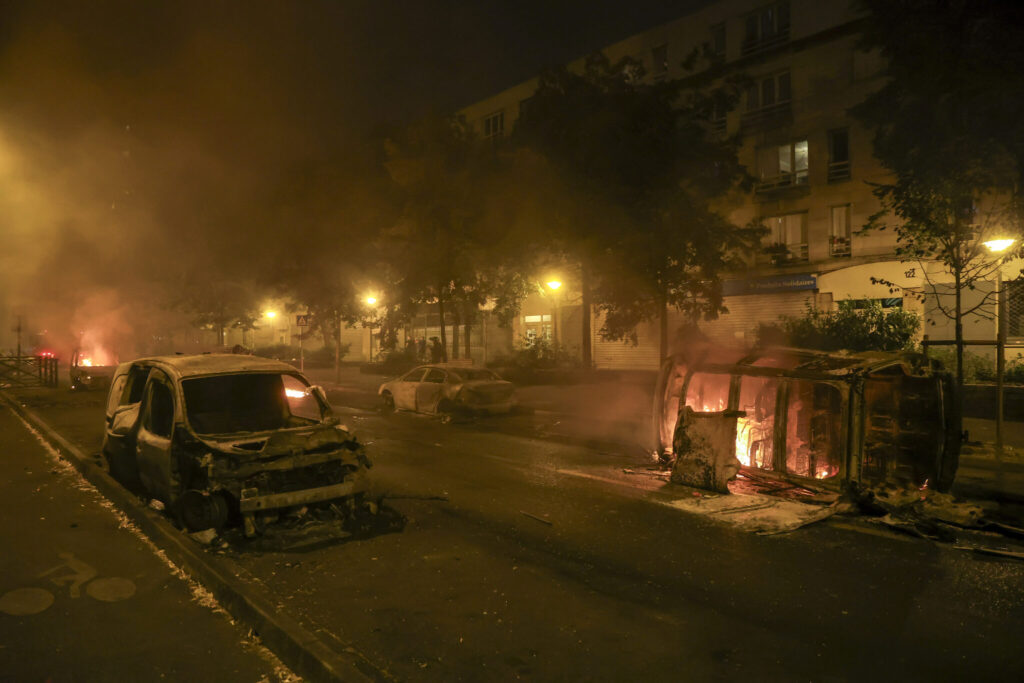
Despite government appeals for calm and vows that order would be restored, smoke billowed from cars and garbage set ablaze in the Paris suburb of Nanterre following a peaceful afternoon march in honor of the teen identified only by his first name, Nahel.
After a morning crisis meeting following violence that injured scores of police and damaged nearly 100 public buildings, Interior Minister Gerald Darmanin said the number of officers in the streets would more than quadruple, from 9,000 to 40,000. In the Paris region alone, the number of officers deployed would more than double to 5,000.
“The professionals of disorder must go home,” Darmanin said. While there’s no need yet to declare a state of emergency — a measure taken to quell weeks of rioting in 2005 — he added: “The state’s response will be extremely firm.”
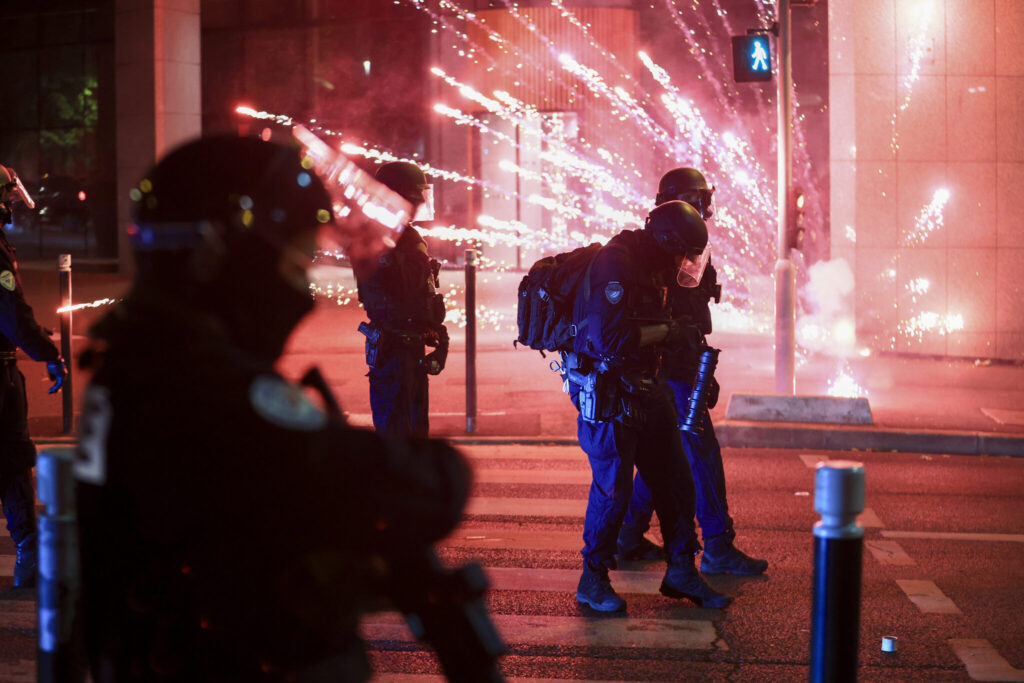
Police reported scattered but seemingly limited violence on Thursday night, with the stepped-up deployments visible on streets. In the usually tranquil Pyrenees town of Pau in southwest France, a Molotov cocktail was thrown at a new police office, national police said. Vehicles were set on fire in Toulouse and a tramway train was torched in a suburb of Lyon, police said. National police had no updated nationwide figure of arrests, but the Paris police said its officers made 40 arrests Thursday, some on the margins of the largely peaceful memorial march for the teen and others elsewhere. The interior minister had reported 180 arrests nationwide before Thursday.
Bus and tram services in the Paris area were shutting down before sunset as a precaution to safeguard transportation workers and passengers.
The town of Clamart, home to 54,000 people in the French capital’s southwest suburbs, said it was taking the extraordinary step of putting an overnight curfew in place from Thursday through to Monday, citing “the risk of new public order disturbances.” The mayor of Neuilly-sur-Marne announced a similar curfew in that town in the eastern suburbs of Paris.
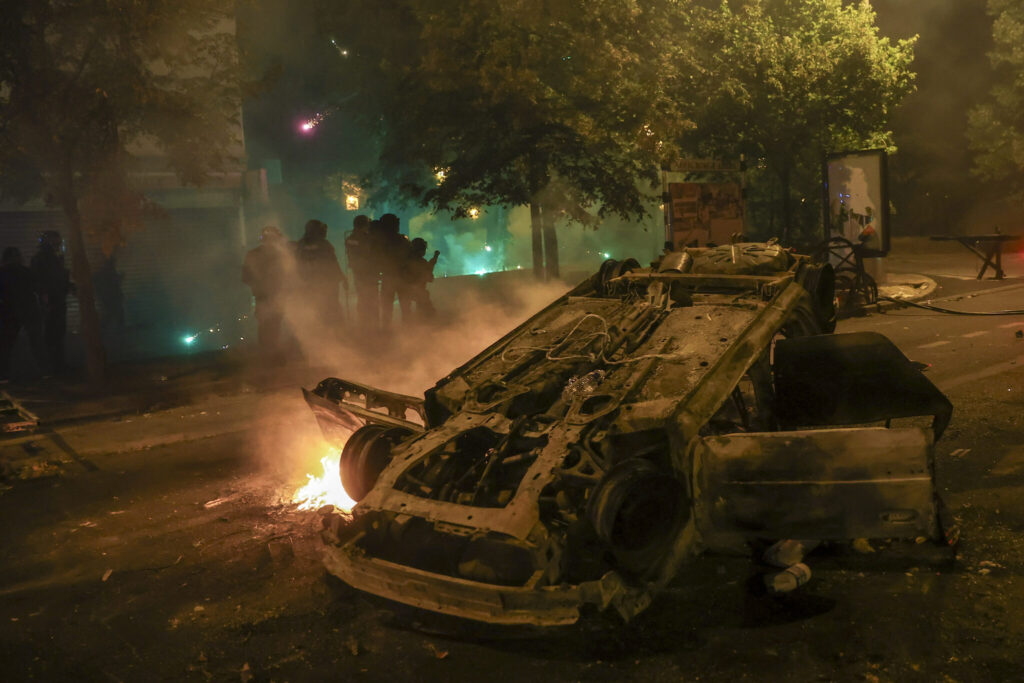
Marseille, the giant port city in the south of France saw the beginnings of unrest Thursday evening, with several hundred young people roaming the city center and setting fire to trash containers, including in front of the region’s main administrative building, police said. Officers dispersed most of the about 400 people who had gathered, police said. Police arrested three people and one officer was injured.
The unrest extended even to Brussels, where about a dozen people were detained during scuffles related to the shooting in France. Police spokeswoman Ilse Van de Keere said several fires were brought under control, and that at least one car was burned.
The shooting captured on video shocked the country and stirred up long-simmering tensions between police and young people in housing projects and other disadvantaged neighborhoods.
The teenager’s family and their lawyers haven’t said the police shooting was race-related and they didn’t release his surname or details about him.
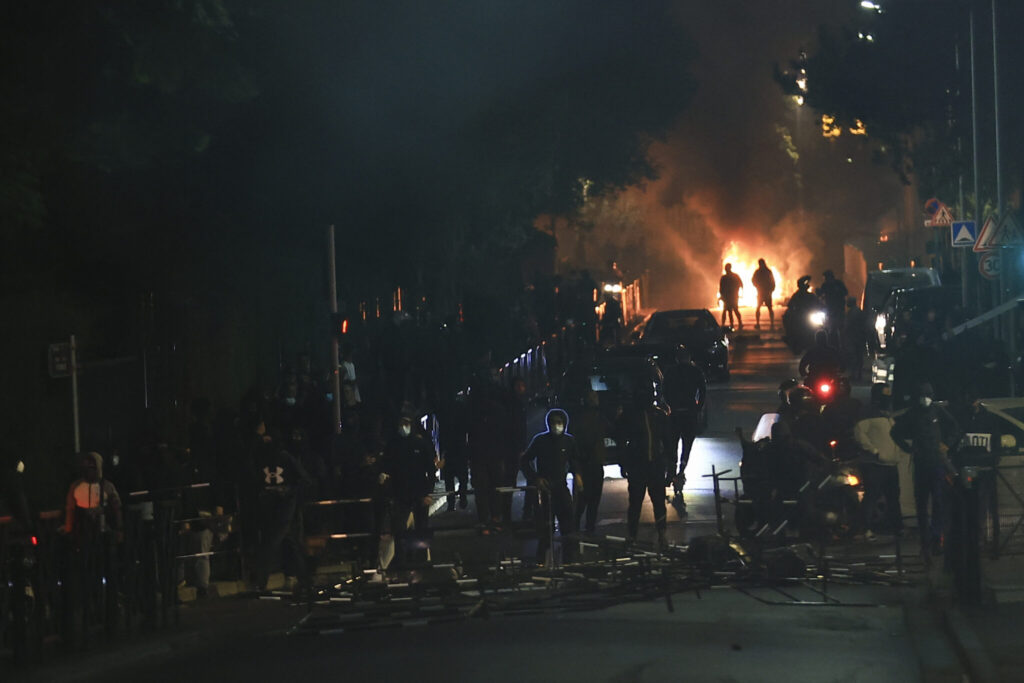
Still, his death instantly inflamed raw nerves in neighborhoods that have welcomed generations of immigrants from France’s former colonies and elsewhere. Their France-born children frequently complain that they are subjected to police ID checks and harassment far more frequently than white people or those in more affluent neighborhoods.
Anti-racism activists renewed their complaints about police behavior in the shooting’s wake.
“We have to go beyond saying that things need to calm down,” said Dominique Sopo, head of the campaign group SOS Racisme. “The issue here is how do we make it so that we have a police force that, when they see Blacks and Arabs, don’t tend to shout at them, use racist terms against them and in some cases, shoot them in the head.”
Prache, the Nanterre prosecutor, said officers tried to stop Nahel because he looked so young and was driving a Mercedes with Polish license plates in a bus lane.
He ran a red light to avoid being stopped then got stuck in traffic. Both officers involved said they drew their guns to prevent him from fleeing.
The officer who fired a single shot said he feared he and his colleague or someone else could be hit by the car, according to Prache. The officers said they felt “threatened” as the car drove off.
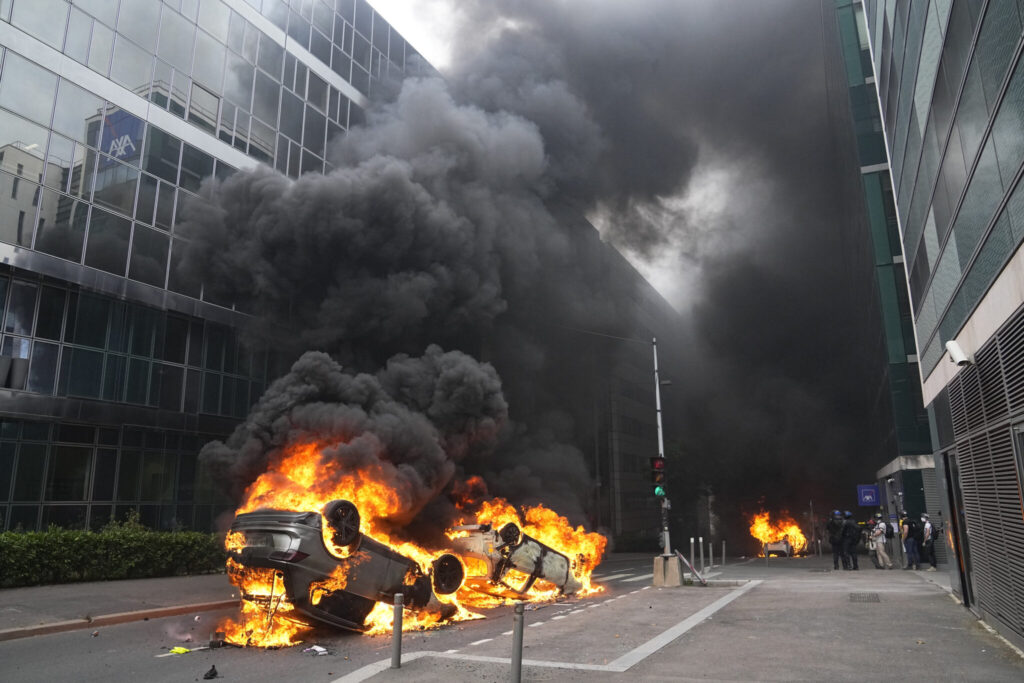
He said two magistrates are leading the investigation, as is common in France. Preliminary charges mean investigating judges strongly suspect wrongdoing but need to investigate more before sending the case to trial. The police officer was in provisional detention, prosecutors said. Authorities have not released the accused officer’s name.
Despite a beefed-up police presence, violence resumed for a second night Wednesday, with protesters shooting fireworks and hurling stones at police in Nanterre, who fired repeated volleys of tear gas.
As demonstrations spread to other towns, police and firefighters struggled to contain protesters and extinguish blazes. Schools, police stations, town halls and other public buildings were damaged from Toulouse in the south to Lille in the north, with most of the damage in the Paris suburbs, according to a national police spokesperson.
Fire damaged the town hall in the the Paris suburb of L’Ile-Saint-Denis, not far from the country’s national stadium and the headquarters of the Paris 2024 Olympics.
Darmanin said 170 officers had been injured in the unrest but none of the injuries was life-threatening. At least 90 public buildings were vandalized. The number of civilians injured was not immediately released.
Scenes of violence in France’s suburbs echo 2005, when the deaths of 15-year-old Bouna Traoré and 17-year-old Zyed Benna led to three weeks of nationwide riots, exposing anger and resentment in neglected, crime-ridden suburban housing projects. The two boys were electrocuted after hiding from police in a power substation in the Paris suburb of Clichy-sous-Bois.
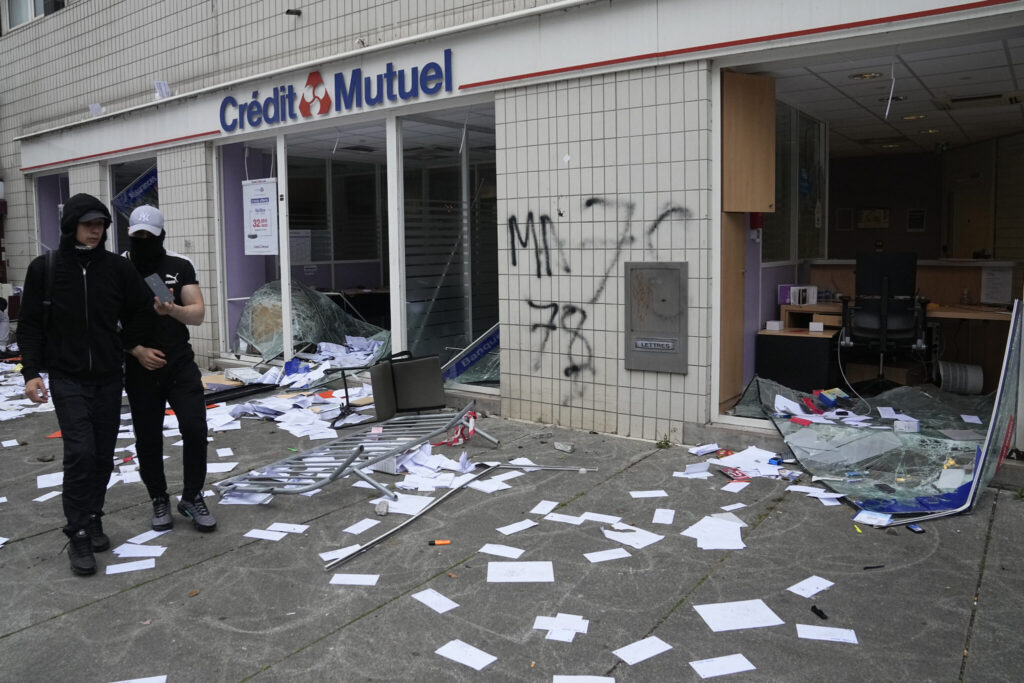
The violence this time has spread faster than in 2005, although it hasn’t matched the nationwide scale and sustained intensity of those riots. There were contradicting accounts about what happened to the two teens in 2005, while the video of Nahel’s shooting immediately galvanized anger. Social media that didn’t exist two decades ago has also amplified unrest this time.
French President Emmanuel Macron held an emergency security meeting Thursday about the violence.
“These acts are totally unjustifiable,” Macron said at the beginning of the meeting, which aimed at securing hot spots and planning for the coming days “so full peace can return.”
Macron also said it was time for “remembrance and respect” as Nahel’s mother called for a silent march Thursday that drew a large crowd to Nelson Mandela Square, where he was killed.
Some marchers had “Justice for Nahel” printed on the front of their T-shirts. “The police kill” read one marcher’s placard.
“I’m afraid of what might come next,” said marcher Amira Taoubas, a mother of four boys, the eldest aged 11. “I’d like it to stop and that it never happens again. It’s just not possible to die like this, for no reason. I wouldn’t want it to happen to my own children.”
Bouquets of orange and yellow roses marked the site of the shooting.
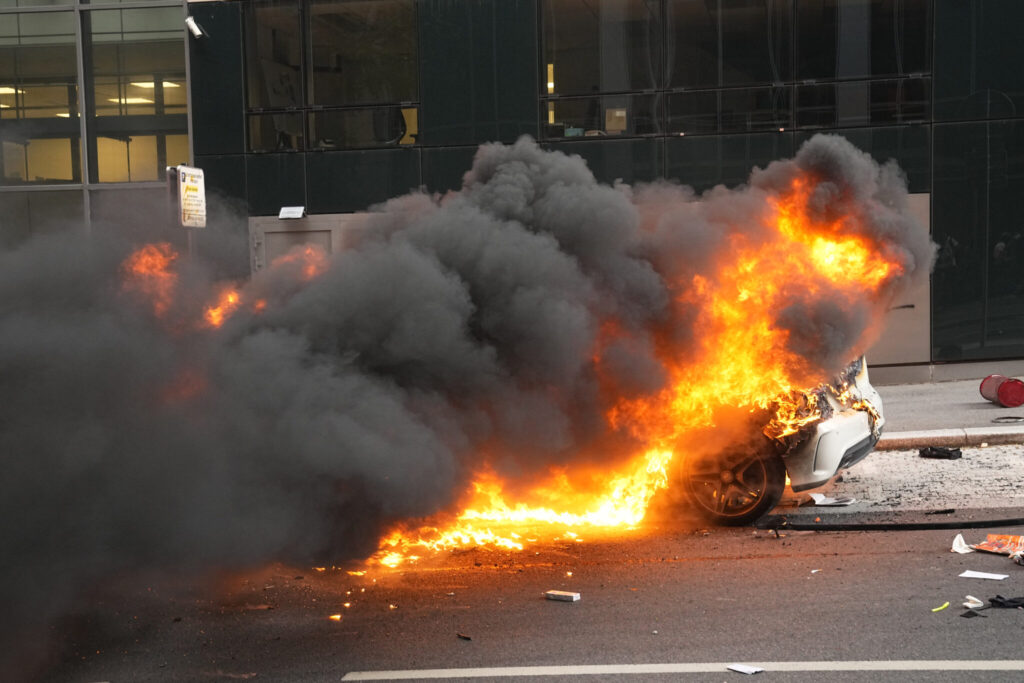
Government officials condemned the killing and sought to distance themselves from the police officer’s actions.
Videos of the shooting shared online show two police officers leaning into the driver-side window of a yellow car before the vehicle pulls away as one officer fires into the window. The videos show the car later crashed into a post nearby.
The driver died at the scene, the prosecutor’s office said.
Deadly use of firearms is less common in France than in the United States, though several people have died or sustained injuries at the hands of French police in recent years, prompting demands for more accountability. France also saw protests against racial profiling and other injustice in the wake of George Floyd’s killing by police in Minnesota.
A police spokesperson said 13 people who didn’t comply with traffic stops were fatally shot by police last year. This year, three people including Nahel, have died in similar circumstances.
Asked about police abuses, Macron said justice should be allowed to run its course.

